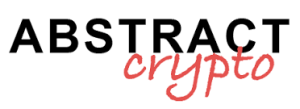Today the CEO of Tether, Paolo Ardoino, published a post on his X profile announcing that the company has surpassed South Korea in the amount of Treasuries held.
With 135 billion of U.S Treasuries, Tether is now the 17th largest holder of U.S debt, passing also South Korea.
Soon Brazil! pic.twitter.com/wUDyvGcSHE— Paolo Ardoino
(@paoloardoino) October 29, 2025
Now Tether is the seventeenth entity in the world in this special ranking, and according to Ardoino, it is set to surpass even Brazil.
It is also the private company that holds the most, considering that all the entities preceding it are States.
The Largest Holders of US Treasury
The single entity that holds the most U.S. Treasuries in the world is Japan, with more than 1.1 trillion dollars.
Until a few years ago it was China, but in recent years the Asian giant has sold many of its Treasuries.
Meanwhile, the Treasuries held by Japan have increased, significantly distancing the second entity in this particular ranking, Great Britain, which stands at just under 900 billion.
China has slipped to third place, with just over 700 billion dollars, which is significantly less than Japan.
All the other entities are very distant, and interestingly the fourth place is occupied by the Cayman Islands, with less than 450 billion.
This is due to the fact that, being the Cayman Islands a true tax haven, as well as an important offshore financial center, they attract capital from all over the world, so much so that thousands of hedge fund, mutual funds, pension funds, and SPV (Special Purpose Vehicles) are based there. These entities manage enormous amounts of money for international investors and invest in Treasury.
The fifth place is held by Belgium, followed by Luxembourg, Canada, France, Ireland, and Switzerland.
In fourteenth place is India, with more than 200 billion, and in fifteenth is Norway.
Brazil holds US Treasury for just over 200 billion dollars, while Tether is at 135.
The US Treasury
The US Treasury are the US government bonds, that is, debt issued by the Federal Government of the United States of America to finance its public debt and public spending.
Those who purchase Treasuries are effectively lending money to the United States Government in exchange for a yield and the repayment of principal at maturity. They are considered among the safest investments in the world, and indeed, they are one of the most purchased investments.
There are different categories of Treasury, based on their maturity. There are short-term ones (up to 1 year), medium-term (from 2 to 10 years), and long-term ones.
There are also the so-called TIPS (Treasury Inflation-Protected Securities), at 5, 10, or 30 years, which also offer protection against inflation.
Furthermore, they are so important that the yield of the 10-year Treasury Note is often used as a benchmark to establish the interest rates of other loans and investments worldwide.
Finally, it should be added that the monetary policy decisions on interest rates by the US central bank (Fed) directly influence the prices and yields of the Treasury.
Tether
Tether is a key player in the crypto world, because it issues the most widely used stablecoin in the world: USDT.
USDT is a stablecoin pegged to the value of the US dollar, but it is not collateralized solely in dollars.
With a total market capitalization exceeding 183 billion dollars, a substantial 135 billion are collateralized specifically in US Treasury.
In other words, the company Tether buys Treasury with the dollars it receives from those who purchase the new USDT tokens issued by them.
Tether thus acts as a bridge of stability between the traditional financial system and the crypto market, providing liquidity to crypto trading in stablecoin.
It should be noted that USDT can always be redeemed for actual US dollars (USD) at an exchange rate of 1:1.
Why Tether Buys US Treasury
If Tether held only USD as collateral for the USDT tokens it has issued, it wouldn’t profit much.
Instead, by investing the USD received in Treasuries, it can collect the interest paid by the American government to those who purchase them. Given that current interest rates are still relatively high, and since Tether holds many Treasuries, the company is collecting billions of dollars in this way.
Furthermore, in case of necessity, the Treasuries can be resold very quickly in exchange for USD, without even the risk of generating significant losses, from this point of view, in the medium/long term.
This strategy of Tether has often been contested, but so far it has always worked well. It is precisely because of this choice, namely not to collateralize USDT primarily in USD, that USDT is not compliant with the new European regulations on the matter, contained in the MiCA.


